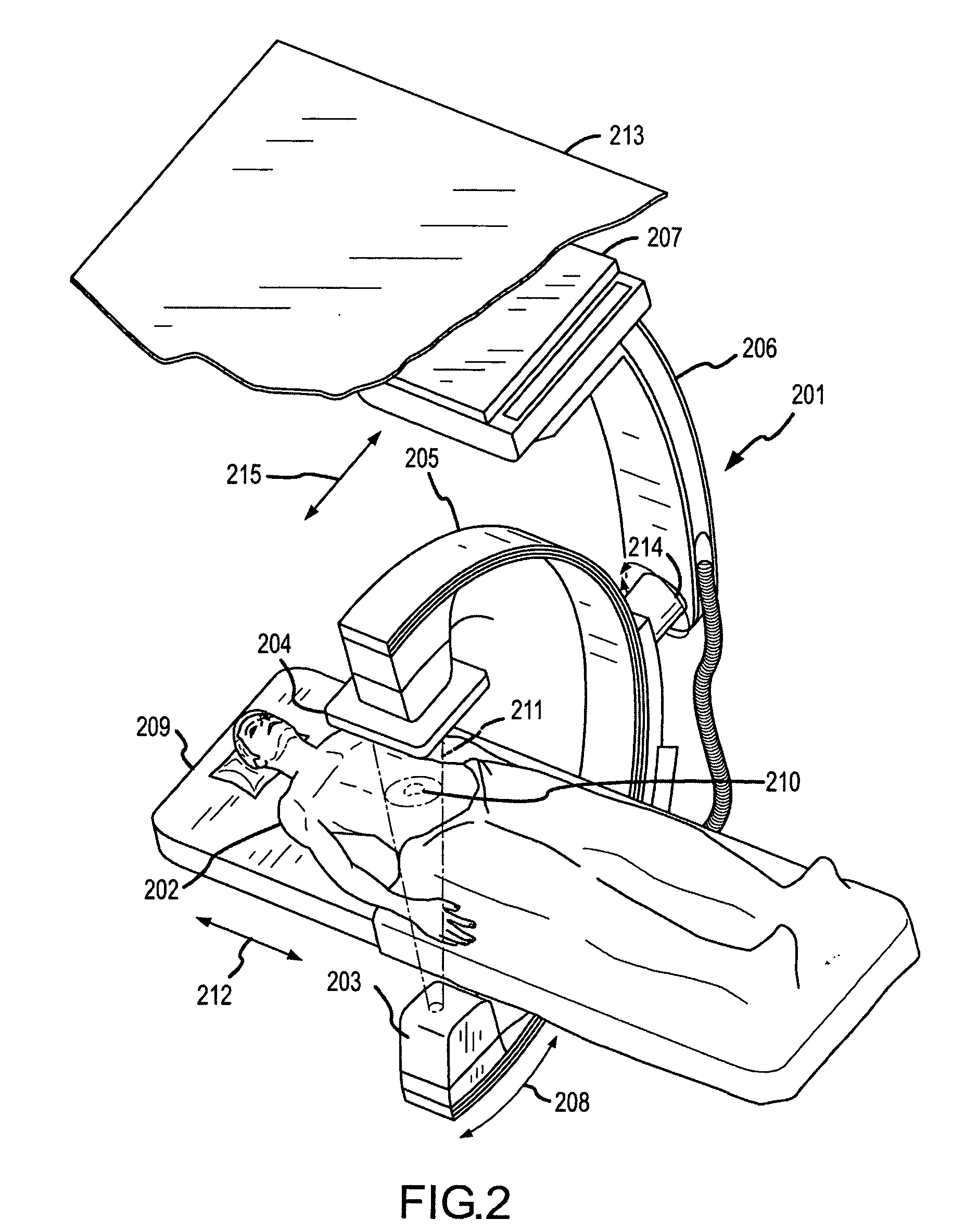Methods for planning and performing thermal ablation
- Summary
- Abstract
- Description
- Claims
- Application Information
AI Technical Summary
Benefits of technology
Problems solved by technology
Method used
Image
Examples
Embodiment Construction
[0118]In the following description, the invention is set forth in the context of apparatus and methods for planning, simulating and performing thermal ablation in a patient.
[0119]FIG. 1 illustrates, in schematic form, a thermal ablation apparatus 100 for performing thermal ablation on a patient 101. The illustrated components, each of which will be described in detail, are an x-ray imaging system 102, a thermal ablation delivery system 103 and a system controller 104. Interfaces for the thermal ablation apparatus 100 are represented schematically by an output device 105 and an input device 106.
[0120]The thermal ablation apparatus 100 is capable of performing a thermal ablation procedure within a Volume Of Interest (VOI) within a patient 101. During the procedure, the x-ray imaging system 102 may capture images of the VOI which may then be used by the system controller 104 to control the thermal ablation delivery system 103 to achieve the goals of a thermal ablation plan. The primary...
PUM
 Login to View More
Login to View More Abstract
Description
Claims
Application Information
 Login to View More
Login to View More - R&D
- Intellectual Property
- Life Sciences
- Materials
- Tech Scout
- Unparalleled Data Quality
- Higher Quality Content
- 60% Fewer Hallucinations
Browse by: Latest US Patents, China's latest patents, Technical Efficacy Thesaurus, Application Domain, Technology Topic, Popular Technical Reports.
© 2025 PatSnap. All rights reserved.Legal|Privacy policy|Modern Slavery Act Transparency Statement|Sitemap|About US| Contact US: help@patsnap.com



